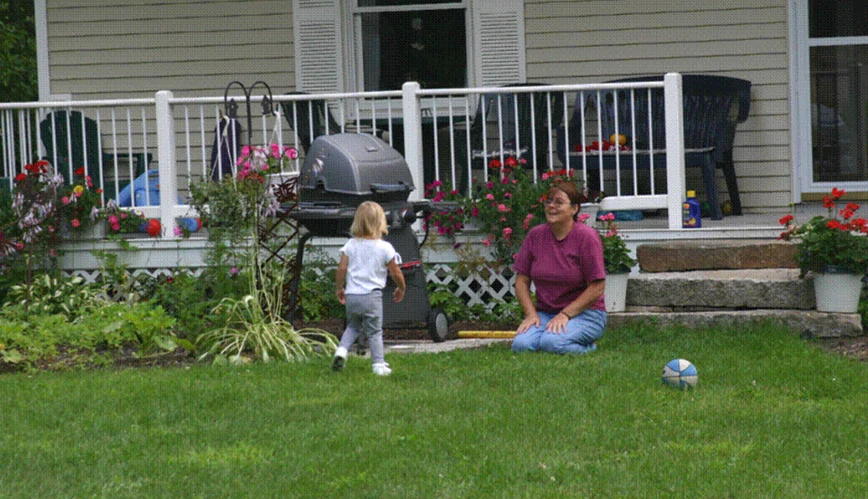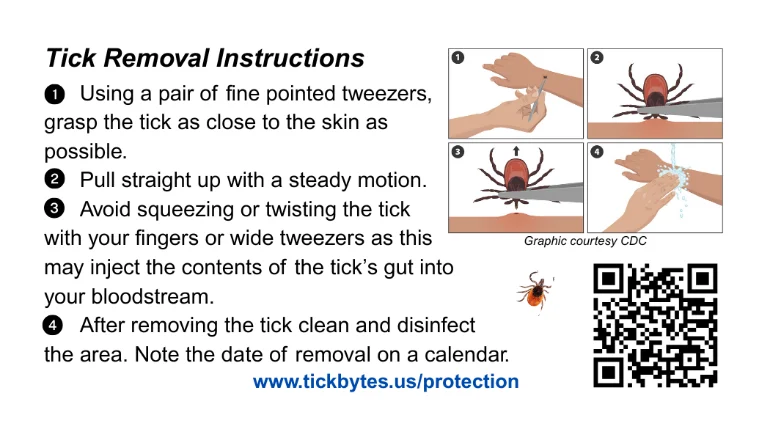
Spending time outdoors brings numerous benefits, but in many areas, including your own backyard, it also brings the risk of tick encounters and the potential for tick-borne illnesses. In our home state of Maine, 2024 saw the highest number of Lyme disease cases ever reported!
By understanding tick behavior and implementing avoidance strategies, individuals can significantly reduce their risk of tick bites. This article outlines the ABCs of tick protection, including awareness & action, behavioral changes, and cultural & community considerations.
A Awareness – Minimize Exposure to Tick Habitats
The first line of defense is to minimize exposure to tick-infested areas. Ticks, particularly the black-legged tick (also known as the deer tick), thrive in shaded, moist environments like wooded areas, tall grasses, leaf litter, and brush.
Here’s how to practice tick avoidance:
- Know where to expect ticks: Ticks are found in grassy, brushy, or wooded areas, often at the interface between your lawn and wooded edge. And yes, ticks often thrive in habitat surrounding your own backyard or neighborhood. Data released by the University of Maine’s Cooperative Extension 2024 Tick Surveillance Annual Report indicated that approximately 68% of those who submitted blacklegged ticks encountered them on their own property. Yardwork/gardening and playing in the yard were the most commonly reported activities at the time of encounters. Drag your property with a light-colored cloth to determine the location, number and species of ticks present.
- Stay on trails: When hiking or walking in wooded areas, stick to the center of cleared trails. Walking your companion animals? Avoid brushing against overgrown vegetation at the edges of roads and trails.
- Create tick-safe zones around your home:
- Clear tall grass, brush, and leaf litter from your yard and around areas where you spend time.
- Mow your lawn regularly to a height of 3 inches or less.
- Keep playground equipment, tables, and swing sets away from woods and tall grass, and place them in sunny locations if possible.
B Behavioral Changes – Adopt Protective Habits
Beyond identifying and avoiding tick habitats, adopting proactive behaviors can further reduce the risk of tick bites.
- Dress for protection:
- Wear long-sleeved shirts and long pants, tucking your pant legs into your socks or boots to prevent ticks from crawling up your legs.
- Choose light-colored clothing to make it easier to spot ticks.
- Protect yourself, children, and pets. Pretreat clothing, socks, and gear (not skin) with permethrin, a tick repellent that remains effective through six washings. Or purchase professionally treated items. Insect Shield has an excellent selection of gear that is effective for 70 washings for people and pets.
- Use EPA-registered insect repellents: Apply insect repellents containing DEET, picaridin, IR3535, or Oil of Lemon Eucalyptus (OLE) to exposed skin, following product instructions.
- Shower promptly: Showering immediately after outdoor activities in tick habitat provides a good opportunity to conduct a thorough tick check.
- Handle clothing carefully: Ticks can enter your home on clothing. Tumble dry clothes in a dryer on high heat for 10 minutes to kill any ticks on dry clothing.
Perform frequent tick checks: After spending time outdoors, thoroughly check yourself, children, and pets for ticks. Use the sensitivity of your fingertips to feel as well as look. Focus on areas where ticks commonly attach, such as under the arms, behind the knees, in and around the hair, inside the belly button, between the legs and toes, and around the waist. Use fine pointed tweezers to remove the tick.

C Cultural Considerations – Community Involvement
While personal avoidance and behavioral changes are crucial, broader community and cultural factors also play a role in tick prevention.
- Public health campaigns: Public health initiatives and campaigns can raise awareness about tick-borne diseases and promote preventative measures. According to a recent study, an estimated 31 million Americans—nearly 1 in 10—are expected to experience a tick bite annually.
- Consider cultural practices: For some communities and organizations, particularly those with a strong connection to outdoor cultural activities (e.g., hunting, fishing, outdoor gatherings), tick exposure can be heightened. Awareness is key to reducing tick encounters.
- Collaborative Control Efforts: Communities can implement collaborative tick control initiatives, such as synchronized neighborhood-wide treatment efforts and habitat modification projects, to achieve more substantial reductions in tick populations.
- The impact of climate change: Climate change, through rising temperatures and changes in precipitation, is influencing the geographic distribution and activity levels of ticks and their hosts, leading to increased human exposure and the emergence of tick-borne diseases in new areas. Understanding these broader environmental shifts and their effects on tick life cycle is important for long-term tick management strategies.
By actively avoiding tick habitats, implementing protective behaviors, and fostering community awareness and engagement, individuals and communities can effectively work towards reducing the threat of ticks and tick-borne illnesses, ensuring safer and healthier outdoor experiences for everyone, especially in your own backyard. Visit tickbytes.us to learn more ways to protect yourself, your family, and your pets.
